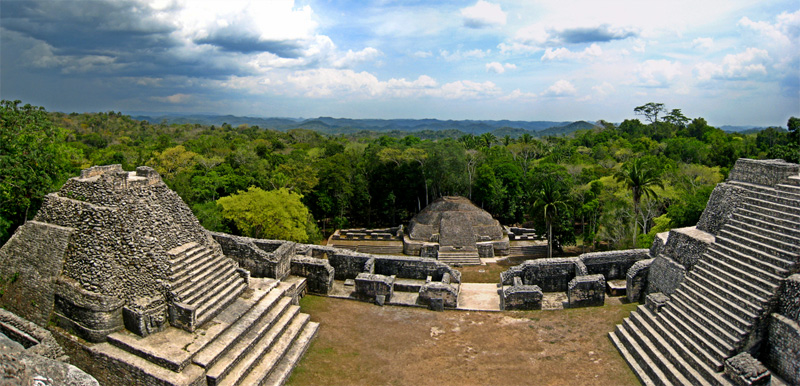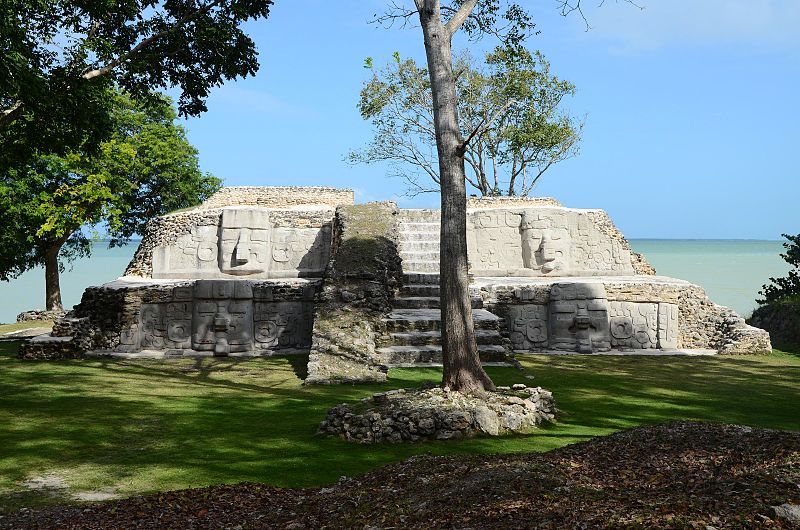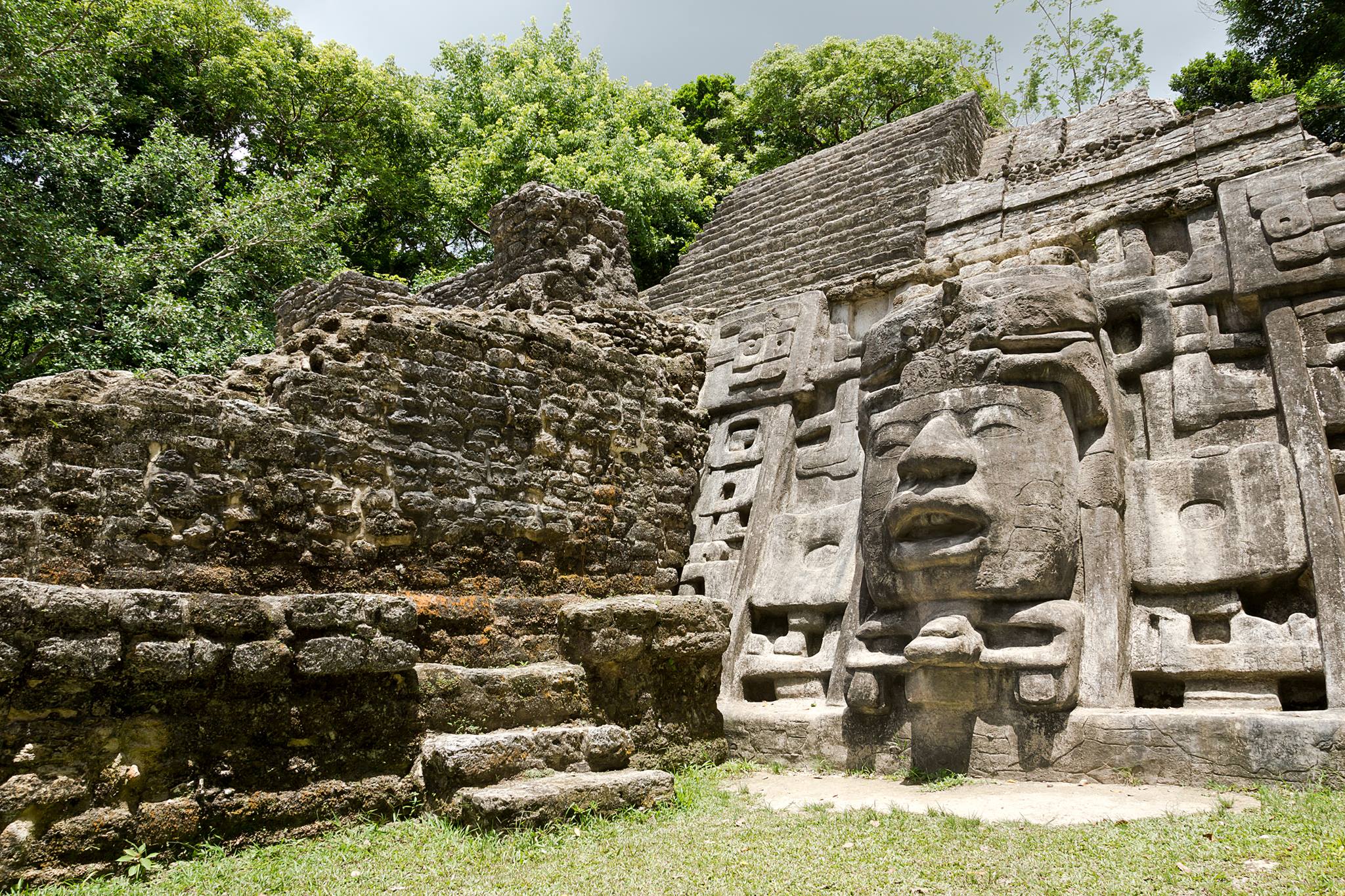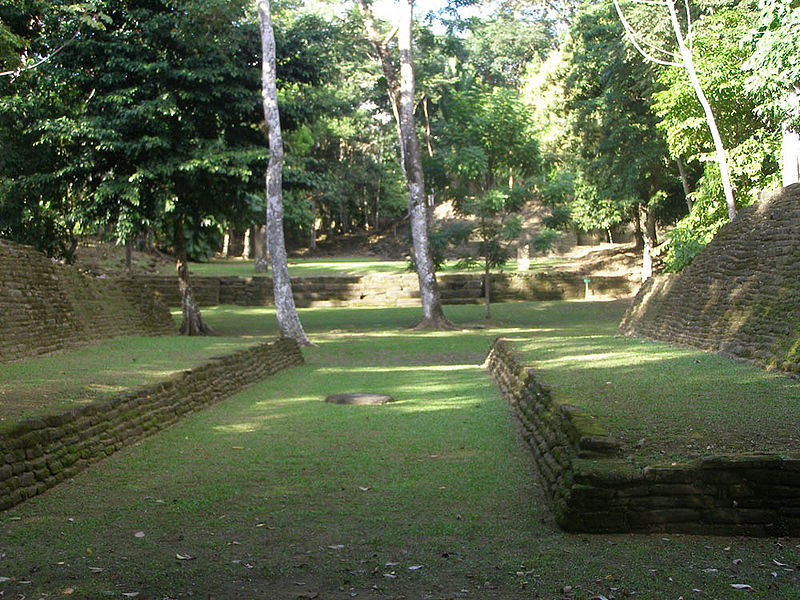The Mayan civilization was one of the most advanced in the ancient Americas. Their society developed a number of significant contributions to mathematics and astronomy, and they maintained a complex language system compared to other tribes of that time period. The Mayans inhabited three general areas in present-day Central America between the Equator and Tropic of Cancer. The southern highlands encompassed the mountainous regions of Guatemala and Chiapas. The southern, or central, lowlands included Campeche, Quintana Roo, El Salvador and Belize. All other Mayans resided on the Yucatán peninsula, known as the northern lowlands.
Belize is home to a number of well known Mayan ruins. These archaeological sites were also historically important. The sites throughout Belize were occupied from the Pre-classic Mayan era until after the Spanish arrived.

Mayan Temple at Altun Ha
On one of our visits to Belize, we visited the ancient Maya site of Altun Ha, which means Rockstone Water. Along the way, we passed the village of Rockstone Pond, which is named after the translation of Altun Ha. We all enjoyed ourselves but the climbing was a bit exhausting. Be prepared to climb some pretty steep steps to the top of the largest temple at the site. The view is well worth the effort.
A little history… This ancient Mayan site was settled somewhere around 250 BC. Throughout its history, some 10,000 Maya lived in and around the area. Altun Ha was considered a major trading center. Archaeologists have determined this based on a large number of jade and obsidian artifacts excavated from this site. One of Belize’s most prized pieces of history was found here. At one of the digs, they found a sizable carving of a head made of solid jade. The carving is that of the Maya Sun God, Kinich Ahau. It weighs almost ten pounds.
The Altun Ha site is rather large spanning an area roughly 25 square miles. It is larger than many of the other Maya ruins throughout Belize. Not all of it has been excavated. The actual site that you can tour is much smaller.
Getting there
The ruins are about an hour’s drive from Belize City. Make a right turn onto the Old Northern Highway just past the village of Sand Hill. The easiest way to get there is to arrange a visit through one of the tour companies. Walking around the site will only take a couple of hours. So you may want to arrange a tour that will take you to do something else after your visit. Remember to bring along plenty of insect repellent for all the bugs. During the rainy season, the ground is usually wet and muddy so wear appropriate shoes. There is a welcome center with plenty of parking space. The restrooms are nice and clean. There is also a craft center nearby, although we did not stop in. I suspect you can get your gift items cheaper in Belize City.

Caracol Belize
Caracol is perhaps the most important of the Mayan ruins located in Belize. Caracol is the Spanish word for “snail”. It is located in western Belize, near the border with Guatemala. It is within the Belize portion of the area known as the Peten rainforest. Caracol was the center of one of the largest Maya kingdoms. Today there are still the remains of thousands of structures that were once part of this great city. Not all of them have been excavated through. Caracol is known for defeating the great city of Tikal in Guatemala.

Cerros Belize
Cerros is another notable Maya site in the country. It is located just off the coast of Corozal Town across the Chetumal Bay. It is well known for its E-Group, which is a unique architectural structure used by the ancient Mayans. These structures are among the most distinct and enduring forms in Mayan monumental architecture. Cerros was an important coastal trading center during its time.

Lamanai Belize
Lamanai is known for being the longest continually occupied site beyond most other Mayan sites. The translated name means “submerged crocodile”. Numerous representations of crocodiles can be seen at the site. Lamanai is located on the New River in the Orange Walk district. It is in a remote area of the jungle but is accessible by boat, which takes you down the river. The Spanish tried to convert the Mayans at Lamanai, but they revolted. Today remains of the Catholic missions that were built can still be seen.
There are various other sites located throughout the country. We hope to eventually visit Caracol, Cerros, and Lamanai. So far, we have visited Altun Ha and Nim Li Punit. When I was younger I visited Xunantunich, but I would like to visit it again with my family. As a child, I lived right across from the Santa Rita site. There is not much left to see, but it was definitely an experience living across from it.

Nim Li Punit Belize
Nim Li Punit is one of the smaller Mayan ruins located in Southern Belize near Punta Gorda Town
Here is a list of other sites:
- Actun Tunichil Muknal – a cave with Mayan artifacts
- Chechem Ha – a cave with Mayan pottery and artifacts
- Cahal Pech
- El Pilar
- Lubaantun
There are few others as well. They are located on private land and special permission is needed to visit them.
Mayan Civilization
Mayan civilizations are classified into three distinct time periods. The pre-classic period took place between 2000 BC and 250 AD. This period was characterized by small tribes and communities of hunters, gatherers and crafters. Maya civilizations peaked between 250 and 900 AD during the classic period. The Mayans developed urban empires full of intellectual achievements and independent city-states. By the post-classic era, which was 900 to 1500 AD, most of the thriving empires had been abandoned except for a few flourishing centers in the Yucatán peninsula. The arrival of the Spanish in the early 1500s started the final collapse of ancient Maya civilizations.
Based on archeological findings and carbon dating methods, the first Mayans appeared in the northern lowlands around 2600 BC. For nearly half of a century, the small communities gathered fruits and plants and hunted animals for survival. The neighboring civilization of the Olmecs influenced the development of the Mayans. Around 2000 BC, Mayan civilizations began forming agricultural societies within small villages. They slowly developed and adopted a hierarchical system within kingdoms and small empires around 300 BC. This trend started with the southern highlands and shifted northward over time. This developmental phase marked the beginning of the classic period.
The center of each kingdom contained a palace and ceremonial architecture for religious purposes. Urban and rural communities surrounded the center, but these citizens remained subordinates of the nobles, priests and rulers. Each kingdom contained independent city-states with their own local rulers called ajaws. Kings were mostly men who gained status through hereditary means. Rulers would appoint their own officials from the noble class. The clergy class, or habinoob, was comprised of holy priests who were similar to shamans. Mayans held priests in high esteems because they were prophetic, communicated with the gods and dictated almost every event. Priests would tell cities when the appropriate times were for planting, harvesting, marriages, sacrifices and ritualistic ceremonies. These individuals worked with the Mayan calendar, mathematics and astronomy to prophesize various events.
Commoners of the Mayan civilization included farmers, merchants, traders and artisans. Slaves existed at the bottom of the social structure and were known as pentacoob. Most slaves were captured from opposing cities during times of war. Nobles owned the slaves and forced them to care for children, clean the home and work on the farms. These indentured servants were also sacrificed during significant religious ceremonies. Mayan civilizations also included warriors who would fight for their rulers. Warfare occurred against competing city-states, during revolts and over disputes of land ownership.
900 AD marked the beginning of the complete Mayan Civilization decline as citizens mysteriously abandoned their cities. Many empires had already crumbled by this point, and the few remaining kingdoms existed throughout Yucatán. Several societies integrated with the Toltecs as Mayan civilizations struggled to survive. Scholars created several theories regarding the collapse, but not one of them is universally accepted. Some popular theories include overpopulation, internal revolt, loss of trade routes and foreign invasion. One theory with scientific data to back it up is that a devastating drought led to the downfall of the Mayans. A natural drought could have been exacerbated by a decrease in rainfall due to over-farming and deforestation.
The Spanish conquest in the 1500s ultimately led to the final collapse of the Mayan civilization. It took the conquistadores 170 years to conquer every individual state, but they succeeded in controlling Mayan populations through the colonial presence and Christianity conversions. Mayan civilizations consisted of several peaks and crashes, but their empires made the final plunge into oblivion with the Spanish arrival.
